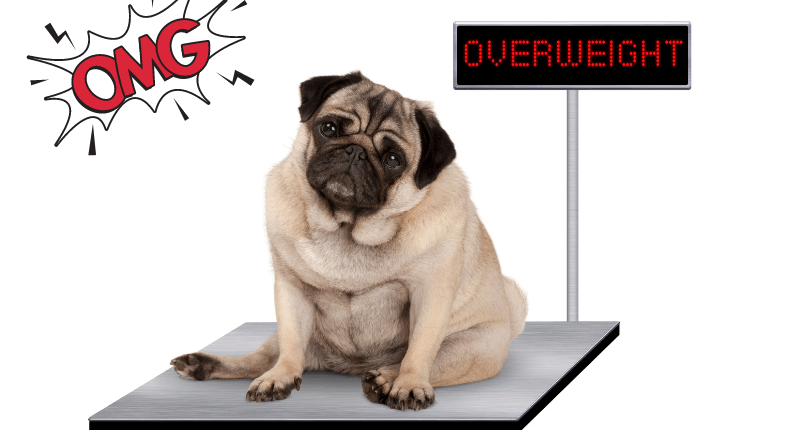Dog obesity has become a significant health concern affecting millions of pets worldwide. With 25-30% of dogs in North America being obese, and 40-45% of dogs aged 5-11 years being overweight, it’s clear that pet parents need effective strategies to help their furry friends achieve and maintain a healthy weight. The good news is that exercise can be both beneficial and enjoyable for overweight dogs when approached correctly.
Understanding the Impact of Excess Weight on Dogs
Before diving into exercise routines, it’s essential to understand how excess weight affects canine health. Even marginally overweight dogs experience “reduced energy with resultant less exercise, ‘easy keeper’ (gains weight on small amounts of food), skin and hair coat conditions, and irregular female reproductive cycles, if intact,” according to veterinary research. This creates a challenging cycle where overweight dogs become less active, making weight loss more difficult.
The encouraging news is that even modest weight reduction can yield significant health improvements. Clinical studies have shown that obese dogs with osteoarthritis demonstrated notable decreases in lameness when they achieved weight loss of just 6.10% or more. This demonstrates that every step toward a healthier weight matters for your dog’s quality of life.
Starting Slow: Building an Exercise Foundation
When beginning an exercise program for an overweight dog, patience and gradual progression are key. Most dogs can safely exercise for 15-30 minutes per day to start, but this should be tailored to each dog’s fitness level and health status. Always consult with a veterinarian before starting any new exercise regimen, especially for significantly overweight pets.
The initial phase should focus on low-impact activities that don’t strain joints or overwhelm an out-of-shape cardiovascular system. Short, frequent sessions are more effective than longer, infrequent workouts. This approach helps prevent injury while building endurance and confidence.
Walking: The Foundation of Canine Fitness
Walking remains the cornerstone of exercise for overweight dogs. It’s accessible, controllable, and provides excellent cardiovascular benefits without excessive joint stress. Start with short 10-15 minute walks and gradually increase duration as fitness improves.
Vary walking routes to keep things interesting and provide mental stimulation. Different terrains like grass, sand, or gentle hills can add variety and challenge different muscle groups. Morning and evening walks during cooler parts of the day are ideal, especially for dogs carrying extra weight who may overheat more easily.
Consider using a front-clip harness instead of a collar to reduce strain on the neck and provide better control. This is particularly important for enthusiastic dogs who might pull, as it protects their airway and gives owners better leverage for safe walking.
Swimming: The Ultimate Low-Impact Exercise
Swimming is often called the perfect exercise for overweight dogs because it provides a full-body workout while being gentle on joints. The buoyancy of water supports body weight, reducing stress on bones and joints while still providing excellent muscle strengthening and cardiovascular conditioning.
Many communities have dog-friendly swimming areas, and some veterinary clinics or pet facilities offer hydrotherapy pools. If natural water sources aren’t available, a kiddie pool in the backyard can work for smaller dogs. Always supervise water activities and ensure dogs can safely enter and exit the water.
For dogs new to swimming, start in shallow water and use positive reinforcement. Some dogs may need flotation devices initially while they build confidence and swimming skills.
Playful Activities That Don’t Feel Like Exercise
The best exercise programs incorporate activities that feel like play rather than work. Interactive games can burn calories while strengthening the human-animal bond and providing mental stimulation.
You can read our guide on how to calculate dog calorie needs
Fetch is a classic option, but modify it for overweight dogs by using shorter distances initially. Hide-and-seek games around the house or yard encourage movement while engaging problem-solving skills. Puzzle toys that require physical manipulation to dispense treats combine mental stimulation with light physical activity.
Tug-of-war provides excellent muscle engagement, but keep sessions brief to avoid overexertion. Dancing with your dog, encouraging them to stand on their legs or walk backward, can be entertaining while providing core-strengthening benefits.
Indoor Exercise Solutions
Weather doesn’t have to derail exercise plans. Indoor activities can be just as effective for weight management and fitness improvement. Stair climbing is excellent for building strength and endurance, though it should be introduced gradually for overweight dogs.
Create obstacle courses using household items like pillows to step over or chairs to weave around. Treadmill training can be beneficial for some dogs, but it requires proper introduction and supervision. Many pet stores sell dog-specific treadmills designed for safe canine use.
Interactive toy rotations keep dogs engaged and moving throughout the day. Rotate different toys weekly to maintain novelty and interest.
Supporting Joint Health During Weight Loss
As dogs begin exercising more regularly, supporting joint health becomes crucial, especially for those carrying extra weight. The additional stress on joints from excess weight, combined with increased activity, requires attention to joint wellness.
Quality joint supplements containing proven ingredients can make a significant difference in comfort and mobility. UC-II® collagen has emerged as a breakthrough ingredient in veterinary joint health, showing superior effectiveness compared to traditional glucosamine and chondroitin supplements. This undenatured type II collagen works uniquely with the immune system to support normal inflammatory pathways and maintain cartilage health.
Research demonstrates that UC-II® collagen can improve joint health by up to 81% compared to placebo treatments, making it an excellent choice for dogs beginning exercise programs. When combined with omega-3 fatty acids, these supplements provide comprehensive joint support during the weight loss journey. You can also consider a weight loss supplement for dogs, but consult your veterinarian before adding any supplements.
Creating Consistency and Motivation
Success in canine weight management requires consistency from both dog and owner. Establish regular exercise schedules that fit into daily routines. Morning walks before work or evening play sessions can become anticipated highlights of the day.
Track progress through photos, weight measurements, and mobility observations rather than focusing solely on the scale. Celebrate small victories like walking farther without panting or playing longer before tiring.
Consider involving the whole family in exercise activities. Children can participate in backyard games, making exercise a fun family activity rather than a chore. This approach also ensures consistency when primary caregivers aren’t available.
Monitoring Progress and Adjusting Plans
Regular veterinary check-ups are essential during weight loss programs. Professional monitoring ensures exercise intensity remains appropriate and identifies any emerging health concerns early. Body condition scoring provides objective measurements of progress beyond simple weight numbers.
Watch for signs of overexertion including excessive panting, difficulty breathing, or reluctance to continue activities. These indicate the need to reduce intensity or duration. Conversely, if activities become too easy, gradually increase challenge levels to maintain progress.
Environmental factors like temperature and humidity affect exercise tolerance. Adjust activities seasonally and be particularly cautious during hot weather when overweight dogs are more susceptible to overheating.
Long-Term Success Strategies
Sustainable weight management requires lifestyle changes rather than temporary interventions. As fitness improves and weight decreases, exercise routines should evolve to maintain engagement and continued progress.
Social activities like group walks or dog park visits can provide motivation and variety. Many communities have dog walking groups or organized pet activities that make exercise social and enjoyable.
Remember that weight management is a marathon, not a sprint. Gradual, consistent progress is more sustainable than dramatic short-term changes. Focus on building healthy habits that will benefit dogs throughout their lives, not just during weight loss phases.
The combination of appropriate exercise, proper nutrition, and joint support creates the foundation for successful weight management and improved quality of life. With patience, consistency, and veterinary guidance, overweight dogs can achieve healthier weights while enjoying increased activity and vitality. The investment in their health today pays dividends in years of active, happy companionship ahead.

